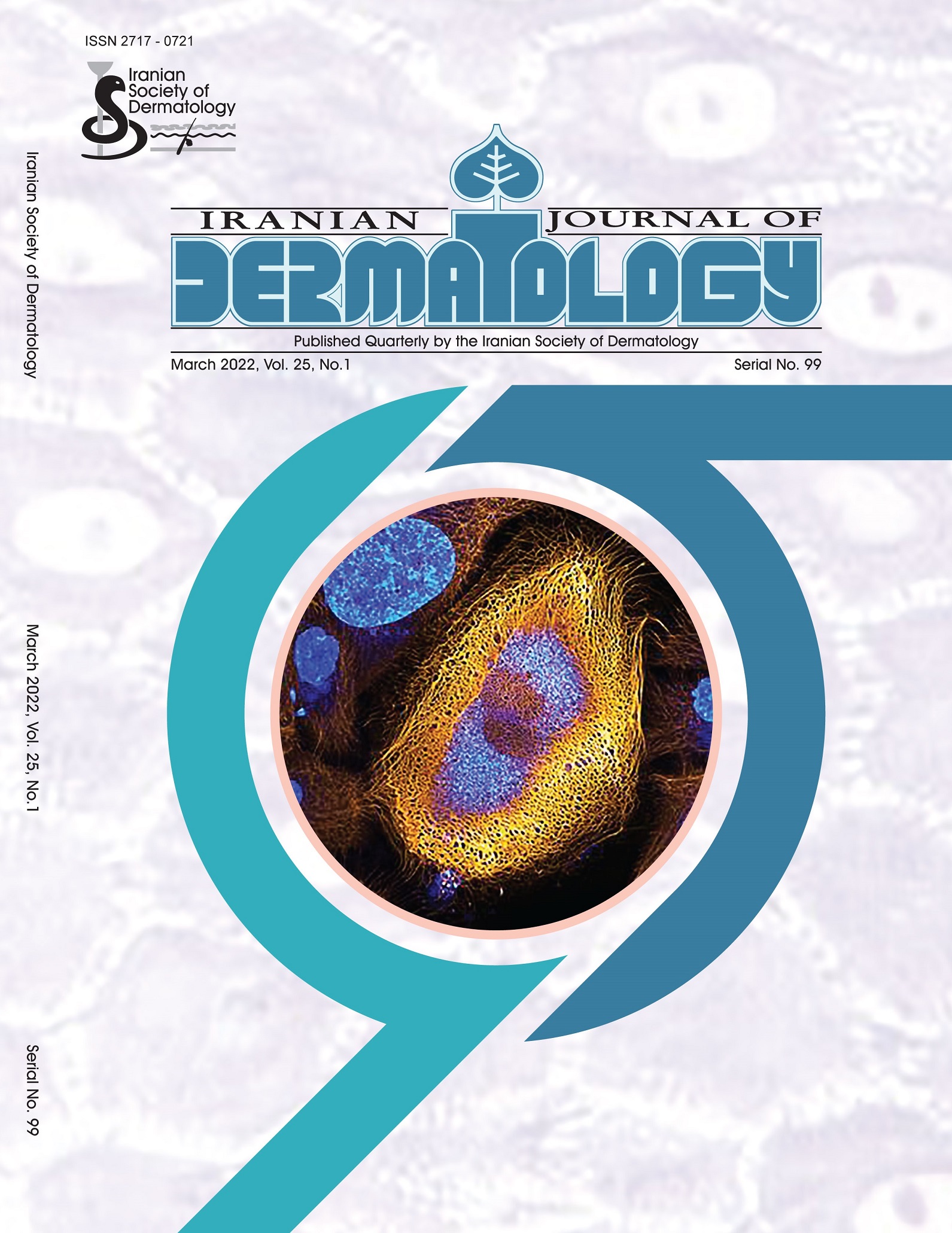Document Type : Short Communication
Authors
- Behnam Avandi 1
- Mehdi Ghahartars 2, 3
- Navid Moradi Kashkooli 1
- Najmeh Ahramiyanpour 4
- Mohammad Mahdi Parvizi 2
1 Student Research Committee, Shiraz University of Medical Sciences, Shiraz, Iran
2 Molecular Dermatology Research Center, Shiraz University of Medical Sciences, Shiraz, Iran
3 Department of Dermatology, School of Medicine, Shiraz University of Medical Sciences, Shiraz, Iran
4 Department of Dermatology, Kerman University of Medical Sciences, Kerman, Iran
Abstract
Erythroderma or generalized scaling dermatitis is a condition marked by redness and scaling of more than 90% of the body surface. This study aimed to review the epidemiological and clinical features of erythroderma patients hospitalized in the Dermatology Ward of Shahid Faghihi Hospital, Shiraz, Iran. This retrospective cross-sectional was conducted from 2001 to 2017 using patient records. All patients with a diagnosis of erythroderma on record were included in the survey, and those whose data were missing or were not compatible with the clinical diagnosis were excluded. Data were analyzed with SPSS version 22 and Stata version 14.2. Overall, 217 erythroderma patients were admitted to this ward, including 119 (54.8%) men and 98 (45.2%) women. The mean age of the patients was 47.27 ± 19.68 years (range: 4-92 years). Moreover, the most frequent cause of erythroderma was drug reaction (67%); lamotrigine, with a frequency of 12 patients, was the most prevalent prescribed medication in patients with drug reaction-induced erythroderma. The mean duration of hospital stay was 6.64 ± 4.50 days; this parameter was directly associated with the erythrocyte sedimentation rate (ESR) or C-reactive protein (CRP) level. Pruritus (41.9%) and fever (15.2%) were the most frequent clinical manifestations among these patients. As erythroderma is a dermatologic condition that medications can induce, patients should be informed about the warning signals and course of the disease before certain medications are prescribed.
Keywords

